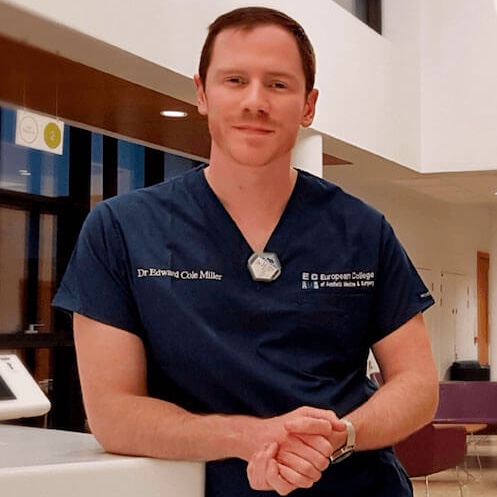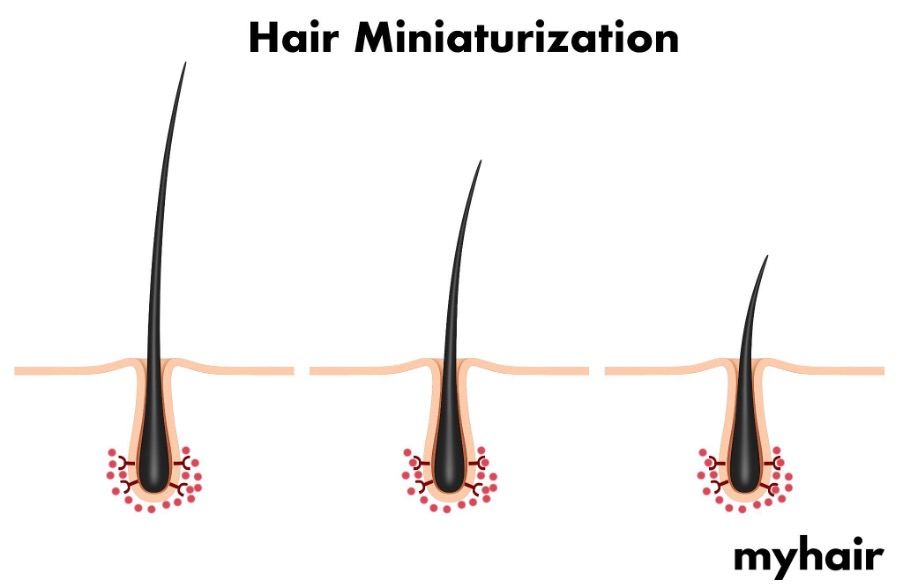Finasteride is an oral medication that’s FDA-approved for the treatment of androgenic alopecia. Like other hair loss treatments, it usually takes around three months to start working. That being said, finasteride research has shown that this drug can start working a bit faster when combined with other treatments.
Can finasteride regrow hair?
Finasteride is definitely able to regrow hair. In fact, it’s the only oral hair loss treatment approved by the U.S. Food and Drug Administration.
This wasn’t the reason this medication was developed, though. Before it received approval for the treatment of male pattern hair loss in 1998, StatPearls Publishing says that it was approved as a medication for benign prostate hyperplasia (prostate gland enlargement).
The same formulation of finasteride is used to treat prostate issues and regrow hair. The main difference is the dosage. Finasteride is taken in pills of 1 milligram when used to treat pattern hair loss. The dosage used to treat prostate gland enlargement is much higher, at 5 milligrams.
Finasteride is the name of the generic medication, but you might be more familiar with this drug by the brand name Propecia®. When used to treat benign prostate hyperplasia, this drug is often referred to by the brand name Proscar®.
How does finasteride work?
Finasteride is a dihydrotestosterone (DHT) blocker. DHT is the main hormone involved in pattern hair loss. When it binds to hair follicles, it causes hair thinning and eventually leads to balding. According to a study in the journal Clinical Interventions in Aging, finasteride essentially works by blocking this hormone. It prevents DHT from ever reaching the hair follicle and causing hair loss symptoms.
There are other DHT blockers used for hair loss, too, like dutasteride and saw palmetto. But DHT blockers aren’t all created equally. Some are stronger than others and work in slightly different ways.
Dutasteride is currently approved for the treatment of androgenic alopecia in South Korea and Japan. Saw palmetto is incorporated into many natural hair loss products, like supplements and shampoos, but isn’t yet FDA-approved to treat androgenic alopecia.
Does finasteride work immediately?
Finasteride isn’t a miracle drug, unfortunately, so it can’t regrow hair immediately. Like with the other FDA-approved hair loss treatments, it usually takes a few months to start seeing hair regrowth.
How long should it take for finasteride to work?
If you’re new to this medication, you’ll probably start seeing improvements in hair thickness and hair density after about 3 months (or if you’re lucky, sometime around the second month). The reason for this delay is due to the hair growth cycle. It takes time for your hair follicles to produce your hair strands.
If you’ve taken finasteride for 6 months without any improvement, you might want to consider trying another hair loss treatment. Minoxidil, a topical serum, and low-level laser therapy (LLLT) are also FDA-approved hair loss treatments. They work in completely different ways to finasteride, so it’s worth giving them a shot.
If you live abroad, you may also be able to consider trying dutasteride. Although this medication also works as a DHT blocker, it’s stronger than finasteride. A study in the International Journal of Dermatology even reported that about 77 percent of men who didn’t respond to finasteride saw positive results after taking dutasteride.
How long does it take dutasteride to work for hair loss?
Dutasteride takes about the same amount of time to work as finasteride. Like finasteride, you’ll need to take your daily dutasteride pill once a day for at least 2 to 3 months before you start seeing improvements in your hair.
How do I know if finasteride is working?
If you’ve never tried a hair loss treatment, you probably don’t know what to expect. The easiest way to see if a treatment is working is to take pictures when you start and once a month after. You essentially want to look at changes to your hair thickness and hair density.
When you hit the 3 month mark, ask yourself a few questions. Do your hair strands feel thicker than they used to? You can even test this by taking a few hair strands and gently pulling. Brittle, thin hair will stretch or break. Thicker hair won’t be affected by a gentle tug.
How about your hair density? Do you feel like the hair on your head is thicker and more voluminous? If you’re not certain, check your scalp for new hair growth. You might see new, shorter hairs emerging from your scalp. If your hair feels thicker, this could be a sign that dormant hair follicles have reawakened and started producing hair strands again.
You’re probably wondering: Where should you expect to see these changes? Well, a study in the Dermatologic Therapy journal reported that finasteride users are most likely to see improvement to the hair around the crown and top of their head. They won’t see as much of a change around their hairline or temples.
Does finasteride work forever?
In theory, finasteride should work forever… as long as you keep taking it. If you stop taking it, though, that’s another story. The Journal of Drugs and Dermatology study says that if you stop taking finasteride, any improvements to your hair will disappear within a year. Your symptoms would return and, without an alternative treatment, you would go bald.
Don’t stress if you miss a day or two of finasteride, though. Your hair regrowth is only likely to be impacted if you discontinue your treatment permanently.
Is there any way to speed up finasteride results?
There’s not much you can do to speed up finasteride results. You just need to be patient and keep taking your daily doses of finasteride.
That being said, some people start taking finasteride because they haven’t seen results after using other hair loss treatments. Say you tried another FDA-approved treatment, like minoxidil, for a few months, and weren’t happy with the results. In this particular case, you might potentially start seeing results from finasteride in less than 3 months.
There have also been a few reported cases of finasteride combination treatments working faster than usual. For example, a review in the Journal of Drugs and Dermatology discussed a study whose participants were able to see hair regrowth results in as little as 30 days.
This particular study combined finasteride with minoxidil, ketoconazole shampoo, and a new topical formulation (made with finasteride, dutasteride, and minoxidil). It essentially combined an experimental topical solution with two FDA-approved hair loss treatments (5 percent minoxidil serum and oral finasteride) and a shampoo (2 percent ketoconazole) known to improve the scalp microbiome.
Notably, only people who used all of these treatments at the same time were able to see such rapid improvements in hair growth. The new topical formulation being tested worked when used on its own, but took the usual amount of time (3 months) to produce results.
Unfortunately, this new topical formulation is still in the research phase, so you probably won’t be able to purchase it for a while. It would also be pretty costly to use all of these treatments on a daily basis.
Finasteride side effects
Finasteride is a great hair loss treatment, but it’s not for everyone. Some people experience particularly bad side effects from this medication. Many of these side effects are sexual in nature, making them particularly impactful both physically and mentally.
According to the studies in Clinical Interventions in Aging and Journal of Drugs and Dermatology, reported finasteride side effects include:
- Altered libido
- Ejaculation disorders
- Erectile dysfunction
- Breast tissue growth
- Breast tenderness
- Decreased testicular size
- Testicular pain
- Reduction in penile curvature and size
- Infertility
- Prostate inflammation
Some of these side effects go away over time. Others, like breast tissue growth, are permanent. And a very small percentage of people report much more severe side effects that continue even after they stop taking finasteride.
Of course, not all hair loss treatments come with such serious side effects. Minoxidil’s side effects, for instance, are limited to issues like dermatitis and dandruff. And according to a study in the Skin Appendage Disorders journal, low-level laser therapy has virtually no side effects beyond skin dryness, irritation, and tenderness.
If you’re worried about finasteride’s side effects, try out a different hair loss treatment instead. You might not want to use dutasteride, though. Although it is more potent and effective than finasteride, similar side effects have been associated with both of these drugs.
Finasteride works, just be patient
Finasteride was one of the first hair loss treatments ever developed. It definitely works, but like all hair loss treatments, it requires a bit of patience. You’ll need to wait around 3 months before seeing improvements to hair thickness and density.
If you don’t see any results after about 6 months of finasteride, this drug might not be the right option for you. If you feel unsatisfied with finasteride or are unhappy with the side effects it causes and want to discontinue the medication, it’s probably best to use a different hair loss treatment.
If you’re looking for alternatives, you can also give minoxidil or low level laser therapy a try. Both of these are safe and effective FDA-approved treatments for androgenic alopecia.





